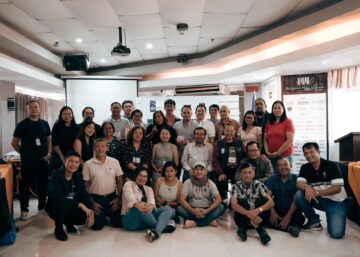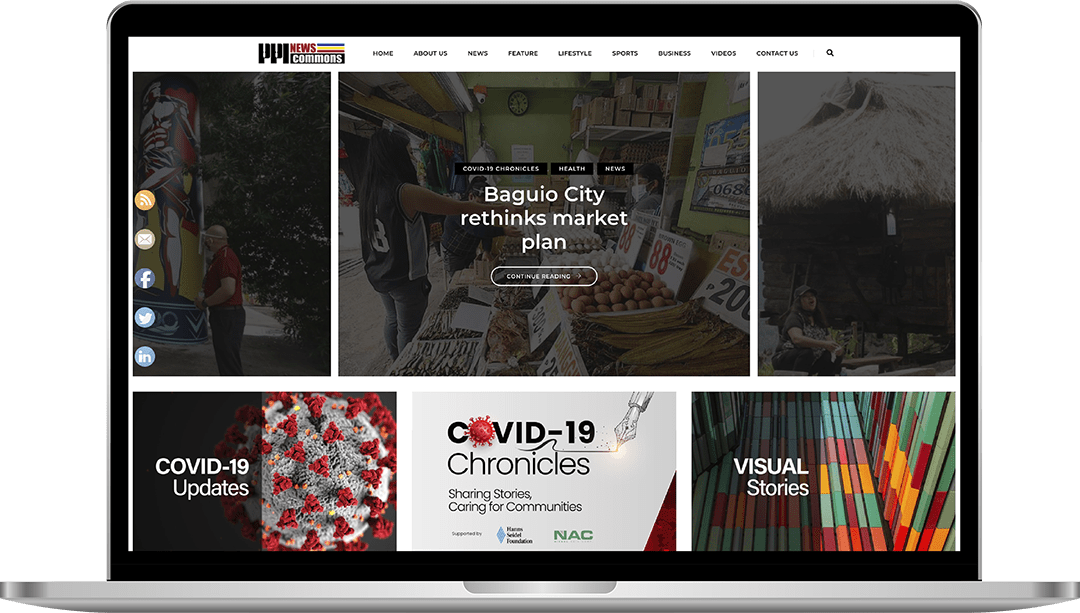In these critical times of pandemic when vetted information and content are necessary for survival, journalists as frontliners have become both instruments and messengers of facts and truths. They brave the odds amidst scare of the contagion, proliferation of disinformation, and despite being demonized by some segments of the society for their stories perceived to be critical by those in power and position.
But what happens when they are constrained to write and file stories due to restricted mobility brought about by the lockdown and government-required accreditation so they can go about their usual routine? More importantly, what happens when their already-struggling news outfits have ceased printing or publication?
That is exactly what is happening now with most of community newspapers in the Philippines which are members of the 56-year old print media organization, the Philippine Press Institute, whose reporters go to communities to cover the pandemic, and now experiencing the brunt of the loss of livelihood.
At least eleven publications (3 from Mindanao, 7 from Luzon, and 1 from the Visayas) have ceased printing temporarily and shifted since then to digital format. These are: Mindanao Times, Mindanao Gold Star Daily, Mindanao Observer, Baguio Chronicle, Mabuhay, Pahayagang Balikas, The Northern Forum, Palawan News, Sun.Star Baguio, Ilocos Times, and Negros Daily Bulletin. Two multi-awarded community papers, Baguio Midland Courier and Visayan Daily Star have resumed publishing printed editions but with reduced circulation and number of pages.
“Under ECQ, there are no street sales and few ads. We’re struggling to keep afloat and pay salaries,” said Carla Gomes, an editor of Bacolod-based Visayan Daily Star. But her paper had not stopped publishing online during most of quarantine time. She added that this enabled the readers to continue to get the news daily even while under quarantine. “We also continued to bring the news to our readers as events happen on our Facebook page.”
In the case of Samar Weekly Express, senior reporter and editor Ricky Bautista said his paper encountered delays in the delivery of hard copies “but we’re able to activate our digital medium whose followers and online readers increased by seventy percent”.
In Northern Mindanao, particularly in Cagayan de Oro City, by far, only two twin-papers, Mindanao Daily News and BusinessWeek Mindanao have unimpeded operations both in print and online. Iloilo-based and widely-circulated Panay News takes pride in being the last standing community newspaper in Region VI in both print and online.
Herbie Gomez, editor-in-chief of Mindanao Gold Star Daily in CDO reported to PPI through its informal survey first week of May that the paper will resume printing any time soon.
With scarce or meager resources to get by, they persisted to hound for news to serve the publics who hunger for journalistic pieces. But journalists, whose newspapers are off newsstands, would never have their stories see print and are left with no choice but to seek for opportunities to peddle their stories. Most of the community papers were in transition during lockdown. “There were no ads, no newsstands, no delivery,” said Frank Cimatu from Baguio Chronicle.
For seasoned investigative journalist and PPI training director Tess Bacalla, it is difficult to imagine the impact of local papers folding up on the communities since the national media cannot be relied upon to pick up the slack. “I hope online editors are continuing though,” she said.
Recognizing these enormous problems on economic survival and changing newsroom dynamics brought about by the spread of the Wuhan virus — and in keeping up with its mandate of “Building Better Communities Through Civic Journalism”, the Philippine Press Institute, also known as the national association of newspapers since 1964, has embarked on a pivotal and landmark project, mainly to: have more narratives coming from the ground in the absence of some community newspapers, give print journalists the legitimate platform for release of their outputs, and thereby provide compensation for their articles to help them survive in these difficult times.
Titled COVID-19 CHRONICLES, the www.ppinewscommons.net was initially introduced in December 2019 and came into full operation first quarter of 2020 for the sole purpose of collecting community stories from its members in the regions under one common website. It took a different turn in March this year when stories about the Wuhan virus inundated all media platforms. For March alone, it has posted more than two hundred stories from journalists all over the archipelago. “We have reviewed the stories and some of these authors will get remunerations for as long as they pass the standards and criteria set forth via the civic journalism framework of the PPI,” said Rolando Estabillo, PPI chairman and president.
Web administrator Kier Labrador said more stories are still being uploaded in the website for the months of April, May, June and up to December of this year.
“It is a work in progress and we cannot thank our partners Nickel Asia Corporation and Hans Seidel Foundation enough for taking on the challenge with us for the sake of journalism and altruism on the side,” said Ariel Sebellino, PPI executive director and head of training operations and special projects. He further added that the PPI cannot pay for all stories written but will award most with modest fees which passed the criteria on a monthly basis.
The multi-faceted projects will take many forms; it can organize webinars, forums, awards, and exhibits, as the organization deems to stay relevant and addresses the so-called new normal.
On June 12, 2020, it conducted for the first time a webinar on “When Reporting Duty Calls” which gathered via Google Meet some of the best community journalists in the country as speakers and panelists. It was the opening salvo that would set the tone for future activities of the overarching project, that gave the opportunity for media practitioners in the regions to share problems and concerns affecting their papers and immediate communities.
Seasoned reporter Julius Mariveles from Digital News Exchange (DNX) in Bacolod City, a new player in local media, highlighted the problem over access to information in view of the mobility restrictions and lack of transparency in government offices. “Perhaps we also have to consider that government offices are on skeleton-force set up and they may not have enough people to cope with work demands. But then, that should not be an excuse,” he said.
One of the good things Covid-19 pandemic has brought upon us is, as Mr. Estabillo said in his opening remarks, “we were forced to embrace technology and learn how to use the digital tools to be able to keep doing our job”.
Another creative approach in turning challenges to opportunities is what Mindanao Times editor-in-chief Amalia Cabusao termed as co-branding, or working with schools to offer a program such as a newspaper in education, or using the newspaper as part of the curriculum. She said, this would not only help increase subscription but also make the students aware of what’s happening around them and to help the students develop a sense and culture of media and information literacy.
For Tita Valderama, former head of the The Manila Times School of Journalism and now editor at Vera Filles, the problem with disinformation exists and has grown bigger. “While we are expected to churn out accurate information, the problem gets worse when official sources present inconsistent or incoherent data, information, or policies.”
Media organizations, like PPI, which depend on grants and donations, also struggle to keep the organization alive and kicking during this pandemic. In the absence of physical gatherings, it has found ways to gather media practitioners to continue discussing and sharing various issues affecting media industry, like it always did in its past regular workshops and conferences, as if nothing changed, but only the technology required a whole new skill and approach to delivering the message and service.
After all, no matter what, journalism is about saving and changing lives, one story at a time.
(Ariel C. Sebellino is the executive director of and trustee at the Philippine Press Institute. He also heads is training operations and special projects.)









